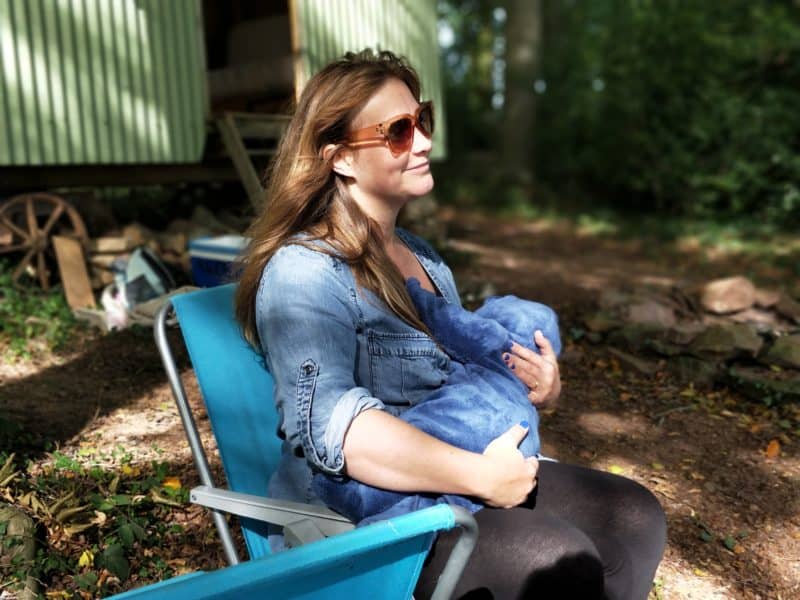A guest blog, written by Ben Bunting. BA(Hons), PGCert – Exercise and Nutrition.
Is Breastfeeding Important?

Breastfeeding is the process of feeding a baby or young child with breast milk directly from a woman’s mammary glands. It can occur for up to two years of age, or longer. Breastfeeding has many benefits for both mother and baby, including reducing the risk of common childhood illnesses such as diarrhoea and pneumonia and lowering a mother’s risk of breast cancer later in life.
It also provides health benefits for mothers who breastfeed their children. These include decreased post-partum bleeding and quicker uterine contraction after birth; increased maternal satisfaction; quicker return to pre-pregnancy weight; increased energy levels; decreased postpartum depression, anxiety, and stress hormones; improved mental health during pregnancy, as well as improved cognitive development in their children.
Breastfeeding is a natural process that every mother should be able to do without feeling awkward or embarrassed. Breastfeeding is the natural way of feeding a baby and it is recommended by many health organizations. The World Health Organization (WHO) recommends that infants should be exclusively breastfed for the first six months and then breastfed together with appropriate complementary foods until two years or beyond.
Laws Protecting Breastfeeding
There are many laws and policies in place to protect breastfeeding mothers, but there is always room for improvement.
Some of these laws that protect breastfeeding mothers are as followed:
- The Affordable Care Act protects women who are breastfeeding by giving them time and space to pump milk at work.
- The Patient Protection and Affordable Care Act (ACA) requires employers to provide break time and a private space for nursing mothers.
- The Fair Labor Standards Act requires employers with more than 50 employees to provide break time for nursing mothers, which includes pumping breast milk.
- Mothers are protected from discrimination if they express milk at work or pump breast milk at home while their children are in childcare or school.
More specifically the United Kingdom has laws to protect breastfeeding, which include:
Under the Equality Act 2010, it is illegal to discriminate against a woman because she is breastfeeding in any area of public life, including shops, restaurants, schools, and workplaces.
It is also illegal to ask a woman to stop breastfeeding her child before she starts or after she has finished in any public domain.
Nutritional Value of Breastmilk
Breastmilk is the best source of nutrition for a baby. It provides all the essential nutrients and antibodies that babies need to grow healthy.
Here’s a breakdown of human breastmilk composition as per the Frontiers in Pediatrics Journal:
- Water: 87%
- Protein: 1%
- Lipids: 4%
- Carbohydrates: 7%
- Vitamins & minerals: 1%
Compared to other mammals, human milk has a low protein content. This reflects the comparatively slower physical growth rate, but it contains more cholesterol which helps the development of hormones for brain development.
However, where human milk does fall short is in Vitamin D and Vitamin K. Therefore, consuming foods rich in these nutrients or supplementation of the two, particularly vitamin D, is advised to reduce any consequences of a deficiency in the mother and newborn.
The calorie content per litre is around 65-70 kcals as outlined by the Pediatric Clinics of North America Journal. Furthermore, while there can be some slight variations of macronutrient content, it is stated to be remarkably similar regardless of the nutritional status of the mother.
How much Breastmilk is needed for the Newborn Baby?

During the initial stages within the first few days after birth, it is recommended that the mother and baby have skin-to-skin contact to help with the bonding process. In addition, any antenatal classes you may attend, or the midwife can help with the breastfeeding process and tackle any initial problems.
Colostrum
During the first few days, your body will produce very nutritionally dense milk, called colostrum. Due to its high concentration of nutrients, only a teaspoon amount may be required for each feeding session. That said, your baby may need to feed every hour.
However, after these early days the feeds will most likely become less frequent but for a longer duration as the milk consistency and content change. It should be noted that a baby’s feeding times will still be much more frequent than a children’s or adult’s and can reach 12 times per 24 hours, or if the baby is hungry this could be over 12 times. Although don’t be concerned, it isn’t possible to overfeed a baby with breastmilk.
Are there any Associated Risks if You don’t Breastfeed?
Breastfeeding is a free choice; however, some health risks have been associated (for both mother and baby) with those not wanting to breastfeed or ending breastfeeding too soon.
The Reviews in Obstetrics and Gynaecology journal published a paper written by Professor Alison Stuebe in 2009 that outlined the dangers related to not breastfeeding, and these included:
- Increased infectious morbidity
- Child obesity
- Type 1 & 2 diabetes
- Leukaemia
- Sudden infant death syndrome
For the mother, the risks can also lead to premenopausal breast cancer, ovarian cancer, type 2 diabetes, and metabolic syndrome.
How Many Calories Are Required during Breastfeeding?
Caitlin Mellendorf (Nutrition and Wellness Educator, University of Illinois) says that an additional 500kcals are required daily to produce enough breastmilk.
Bear in mind that a typical female’s daily calorie requirements are around 2000kcals. However, this can vary depending on activity levels. Therefore, a female who has high activity levels may require more calories to sustain their needs. Whatever your current needs are, add another 500kcals to your food intake.
What do 500kcals look like?

It can be difficult to visualize what 500kcals look like, and therefore, without counting, difficult to understand what extra you need to consume.
Sweet foods and junk foods are generally high in calories, so eating these foods would probably fulfil your calorie needs easily and quickly, however, they can lack other nutrients that your body (and the babies) require.
Therefore, you are better sourcing these additional calories from nutrient-dense foods in order to help maintain good health for you and your baby, not to mention your fertility should you wish to have another child further down the line.
Typical foods and their calorie composition:
- Scrambled eggs on toast – 501kcals
- 1 slice of granary toast – 63kcals
- Porridge with honey – 293kcals
- Banana – 62kcals
- Bacon roll – 389kcals
- White coffee – 34kcals
- 1 Serving of Kellogg’s Crunchy Nut – 140kcals
- Grilled chicken breast – 148kcals
- A small portion of chips – 423kcals
- 1 Fried egg – 120kcals
- 1 apple – 30kcals
- Mango, passion fruit, and peach smoothie – 207kcals
- Whey protein shake – 99kcals
- Big Mac – 508kcals
If you want to find out what calories are in foods, the NHS provides a great online calorie checker, which you can find here.
The take-away
Breastfeeding a baby is a great way to help the child develop whilst warding off the potential complications of illness and disease, not only for the baby but also for you.
Breast milk is full of the nutrients the baby requires in the early months (and sometimes years) but without additional calories being consumed by the mother, it can be difficult to sustain. Therefore, the guidance states that an additional 500kcals should be consumed daily.
Fast and junk foods can fulfil this requirement easily, however, a pragmatic approach to consuming foods rich in nutrients would benefit yourself and the baby.


